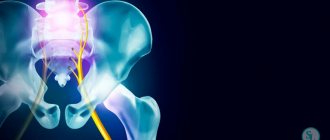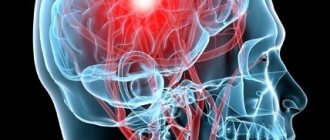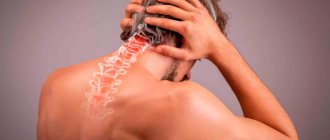15:20 07 March 2021 Health
Such numbness is medically called paresthesia. There may be several reasons for the phenomenon. The most common is staying in one position for a long time, sleeping with your face pressed to the pillow. But in 20% of cases, manifestations may indicate problems with the central nervous system. Let's look into the issue in more detail.
Photo by elenaleonova / E+ / Getty Images
Why does my face go numb and what can I do about it?
So, first, let's name the natural causes that lead to facial numbness.
You were lying on an uncomfortable pillow, fell asleep face down, were very nervous, were in extreme cold and felt signs - tingling, lack of sensitivity, twitching - do a massage: with gentle movements bring the blood flow to normal and in a couple of minutes your face will come to life again.
It would be a good idea to use the test recommended by doctors.
- Lightly prick the numb part with a sterile needle.
- If there is no sensitivity, consult a doctor immediately. The symptom indicates local paralysis, and there is a possible risk of stroke.
- In cases where the symptom is accompanied by loss of vision, consciousness, nausea, and strong heartbeat, you should call an ambulance and, until it arrives, take a horizontal position, with your head higher than your torso.
If you witness such a condition, you need to start first aid.
- With one hand, check the victim’s pulse and at the same time call an ambulance.
- If there is no pulse, create conditions for an influx of fresh air, perform artificial respiration, and cardiac massage.
Photo by fizkes/iStock/Getty Images Plus/Getty Images
Disorders of facial innervation
A neurotic face may develop due to damage to the nerves that innervate it. Most often these are the trigeminal and facial nerves.
The trigeminal nerve is the 5th pair of cranial nerves. It is the largest of all 12 pairs of these nerve fibers.
N. trigeminus arises symmetrically on both sides of the face and consists of 3 large branches: the ophthalmic, maxillary and mandibular nerves. These three large processes innervate a fairly large area:
- skin of the forehead and temples;
- mucous membrane of the oral and nasal cavities, sinuses;
- tongue, teeth, conjunctiva;
- muscles - chewing, floor of the mouth, palatine, tympanic membrane.
Accordingly, when it is damaged, pathological sensations arise in these elements.
Facial nerve – 7th pair of cranial nerves. Its branches surround the temporal and ocular region, the zygomatic arch, and descend to and behind the lower jaw. They innervate all facial muscles: auricular, orbicularis and zygomatic, chewing, upper lip and corners of the mouth, cheek. As well as the muscles of the lower lip and chin, around the mouth, the muscles of the nose and laughter, and the neck.
N. facialis is also paired, and is located on both sides of the face.
In 94% of cases, the damage to these nerve fibers is unilateral, and only 6% is a bilateral process.
Disruption of innervation can also be primary or secondary.
Primary is the lesion that initially involves the nerve. This could be hypothermia or strangulation.
Secondary damage develops as a consequence of other diseases.
Another reason for the development of facial neurosis is neurogenic and mental disorders. When unpleasant sensations in the face and head occur against the background of psycho-emotional arousal, shock, or as a result of stressful situations.
Other causes of facial numbness
1. The face often goes numb during attacks of headaches or migraines. Symptoms include nausea, weakness, and sensitivity to bright light. Numbness may indicate cervical osteochondrosis, vasoconstriction, vegetative-vascular dystonia, high or low blood pressure.
2. Also, a lack of potassium, B vitamins, calcium in the body, stress, and pinched nerve endings on the face can lead to this kind of sensation.
3. For those suffering from inflammation of the trigeminal nerve, numbness is a familiar sensation. At the same time, a person has frequent headaches and migraine attacks.
When part of the face goes numb, the symptom indicates Bell's disease. One of the branches of the trigeminal nerve becomes inflamed, and as a result, sensitivity is lost; the patient is accompanied by severe pain, shooting from ear to nose. In the acute phases of the problem, the face becomes distorted.
The nature of the disease can be ARVI, herpes zoster, brain tumors, stress, hypothermia, or injury.
Important: at the first signs you should consult a doctor. Taking analgesics will only temporarily relieve pain, and in many cases even they are powerless. Complex treatment of the trigeminal nerve with antiviral drugs will be required.
Anti-inflammatory therapy, glucocorticoids and non-steroidal medications are prescribed, physiotherapy, vitamin complexes, and massage are effective.
When to see a doctor
To restore sensitivity and get rid of numbness in the chin or jaw, it is recommended to visit the dentist at the first signs of discomfort. Comprehensive diagnostics makes it possible to establish the root cause of the pathology and begin targeted therapy that helps restore the natural state of tissues. To prevent paresthesia, it is also recommended to periodically do short facial exercises that stimulate internal processes and restore the functionality of the facial muscles.
Physiological state
“Often a feeling of numbness in the head occurs during sleep. When you wake up with a numb head, it may be a sign that you are sleeping in a position that restricts blood flow to your head,” notes the neurologist. Here you can try to cope with the problem of sleep correction. “In this case, try sleeping on your back or side, placing your head and neck in a position that will not cause discomfort. If you are lying on your side, try putting a pillow between your knees, this will help straighten your back,” advises Irina Ryabokon.
Allergic manifestations
Many people suffer from hives. But sometimes this allergic manifestation is accompanied by damage to the deep layers of the skin. Then the patient may not only turn red in different areas of the skin, but also experience swelling and tingling. Sensitivity is lost. Sometimes a person suffering from allergies notices that his cheek becomes numb, his tongue becomes swollen, his limbs, genitals, and lips swell. Quincke's edema or angioedema manifests itself A swollen tongue or swelling of the larynx can be life-threatening as it makes it difficult to breathe normally. asphyxia may occur .
Angioedema is autoimmune in nature; this process is triggered when the body is exposed to an allergen. It is often difficult to determine which substance caused such a reaction. Therefore, a study is conducted of the patient’s body’s response to five different components:
- food and medicines;
- plant pollen, dust;
- insect bites and parenterally administered drugs;
- chronic diseases;
- infections.
If Quincke's edema has been confirmed. what to do is determined by the doctor. He prescribes hormonal, antihistamine, anti-inflammatory, and diuretics.
If the disease is not treated, its symptoms last for several days, after which they disappear along with discomfort. Every person who has been diagnosed with angioedema at least once should always have antihistamines, corticosteroids and epinephrine in order, if necessary, to stop the spread of edema to the larynx.
If a person's nose becomes numb, it may be due to an allergy to cold. True, the reasons why the tip of the nose goes numb may be associated with more serious problems. If the nose goes numb at the same time as the back of the head, this may indicate a stroke .
Diagnostics
The diagnosis is made by a neurologist. According to indications, the patient is referred to a dentist, maxillofacial surgeon or hematologist. To clarify the cause of chin numbness, the following diagnostic procedures are performed:
- Neurological examination
. With neuralgia, trigger points are determined at the exit points of the nerve branches. A comprehensive study of sensitivity, reflexes and muscle strength can detect neurological deficits indicating damage to brain structures. - Dental examination
. Informative for injuries, osteomyelitis of the jaw. It makes it possible to confirm the presence of a fracture and identify the disease that provoked the development of a pathological process in the bone. - Radiography
. In case of injuries of the maxillofacial area or osteomyelitis, photographs of the lower jaw are taken. If damage to the spinal column is suspected, an X-ray of the cervical spine is performed. - CT scan
. It is used to clarify the volume and localization of traumatic and inflammatory foci in the area of the skull and lower jaw, and to detect degenerative processes in the spine. Effective in identifying narrowing of the canals through which the trigeminal nerve passes. - Magnetic resonance imaging.
Recommended for cerebral tumors. Visualizes cysts and neoplasms. To confirm the vascular etiology of nerve compression, MR angiography is prescribed. - Lab tests
. For pernicious anemia, a biochemical blood test, tests for antibodies to intrinsic Castle factor and gastric parietal cells are indicated. In case of tumors, a morphological study is necessary to establish the nature and degree of differentiation of neoplasia. In inflammatory processes, culture of the discharge is required to determine the microflora.
Physiotherapy
General information
Decreased sensitivity or numbness of the tongue and lips indicate problems that are developing in the body.
A person immediately notices if their lips lose sensitivity or their tongue becomes numb. What this means, and what specific diseases may be manifested by a decrease in taste and tactile sensitivity, is best to find out from a doctor. But there are still certain features of this symptom. Thus, the tongue or lips may become numb gradually or almost instantly. Almost always, this symptom is accompanied by other signs of the disease, which makes it possible to facilitate diagnosis.
Sensitivity decreases due to impaired innervation of the lips and tongue. Speaking about whether numbness of the tongue is a sign of what and what diseases it may indicate, a number of factors should be noted: infectious, vascular, mechanical, etc. However, it is important to find out exactly what disease is causing the tongue and lips to numb. The features of this symptom and the diseases in which it manifests itself will be discussed below.
Multiple sclerosis
Common neurological disease. It is of autoimmune and metabolic origin.
Accompanied by destruction of the myelin sheath of nerve fibers. For this reason, the speed of impulse transmission drops, and then the possibility of this is lost completely. The disease affects the brain, less often the spinal cord.
Such degeneration progresses constantly, but does not lead to critical disorders at one point. This is a rather lengthy process. It takes more than one year before disability, often much longer.
Timely treatment can reduce symptoms and significantly slow down the pathological process.
The clinical picture is varied and depends on the location of the area of nerve fiber destruction. Typically, motor dysfunctions, a feeling of numbness of the face and limbs, decreased visual acuity, and cognitive disorders are detected.
Intelligence, however, suffers only slightly, at least in the early stages. Without treatment, there is a high chance of rapid disability.
Dermatillomania
Neurosis of the face and scalp can manifest itself in a behavioral disorder such as dermatillomania.
Its main manifestation is scratching the skin of the face and head, not because of itching, but because of dissatisfaction with its appearance. This also includes an obsessive zeal to squeeze out pimples, scratch off scabs, and pull out hair. Self-injurious actions cause a short-term feeling of pleasure, followed by feelings of shame, frustration, and dissatisfaction.
The face of such patients is covered with scars and scars due to constant trauma to the skin. This process is uncontrollable and can occur at any time of the day. But most often traumatic actions are carried out in front of a mirror.
Symptoms of the disorder also include the habit of biting the lips and mucous membranes of the cheeks. Patients are not deterred by the prospect of redness, bleeding, and scarring of the skin. They repeat the ritual day after day. It lasts from a few minutes to an hour.
Such actions can be provoked by feelings of fear, anxiety, and close examination of one’s skin because there is nothing to do.
Dermatillomania has been described as a state of addiction. It begins with concentrating on what the patient thinks is a skin defect. Gradually, attention is increasingly focused on this detail. A person begins to think that he is sick with something serious. This provokes irritability and nervousness in him, leading to obsessive actions.
The root cause of the disease is rooted in the psychological state of a person and lies in self-dissatisfaction, anger, feelings of shame and malice. Traumatic rituals are a way of punishment, self-flagellation.
Treatment of this pathology requires the intervention of a psychotherapist and a dermatologist.
The main method of treating addiction is psychotherapy, in particular cognitive behavioral therapy.
Yoga, physical exercise, relaxation procedures, as well as any hobby that absorbs a person and helps redirect attention will help reduce anxiety, distract and relax.
The help of a dermatologist is necessary to eliminate skin lesions in order to prevent infection and reduce the degree of dermatological defect.







